![]()
![]()
![]()
Use LEFT and RIGHT arrow keys to navigate between flashcards;
Use UP and DOWN arrow keys to flip the card;
H to show hint;
A reads text to speech;
37 Cards in this Set
- Front
- Back
|
What does the cardiovascular system consist of? |
Heart, lungs, arteries, veins |
|
|
What are the functions of the cardiovascular system? |
Transport, regulation, and protection |
|
|
What does the heart do? |
Pumps blood through blood vessels |
|
|
How is the heart divided? |
Divided into 4 chambers 1. Left atrium 2. Right atrium 3. Left ventricle 4. Right ventricle |
|
|
What is the left ventricle? |
Sends oxygenated blood out to the body via the aorta |
|
|
What does the left atrium do? |
Receives oxygenated blood from lungs and sends it to the left ventricle |
|
|
What does the right ventricle do? |
Sends depleted blood out to lungs via the pulmonary artery |
|
|
What does the right atrium do? |
Receives depleted blood from the inferior and superior vena cava and sends it to the right ventricle |
|
|
What do the lungs do? |
Allow for gas exchange in blood (CO2 out, O2 in) |
|
|
What is the hierarchy of the lungs? |
Trachea Bronchi Bronchioles Alveoli |
|
|
What are alveoli? |
Thin, stretchy sacks where gas moves from high to low concentration |
|
|
What is transportation for in the cardiovascular system? |
Responsible for transporting materials to and from various organs of the body |
|
|
What does the cardiovascular system transport? |
Nutrients, oxygen, and hormones to cells as well as metabolic wastes from cells |
|
|
How does the cardiovascular system provide protection? |
Circulates white blood cells, antibodies, and complement proteins which defend the body against foreign microbes and toxins |
|
|
What else does protection provide to the body? |
Circulates clotting mechanisms that protect against damage to tissues |
|
|
What does the cardiovascular system do in terms of regulation? |
Regulates body temperature, fluid pH, and water content of cells |
|
|
What does your body do when you're cold? |
Blood vessels constrict to maintain temperature |
|
|
What does your body do when you're hot? |
Blood vessels expand which increases surface area |
|
|
What pH is acceptable? |
7.35 to 7.45 |
|
|
Femoral vein |

(Blue one) |
|
|
Femoral artery |

|
|
|
Internal jugular vein |
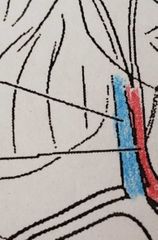
|
|
|
Common carotid artery |
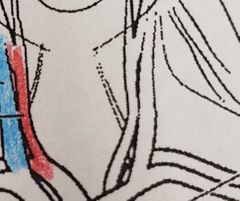
|
|
|
Superior vena cava |
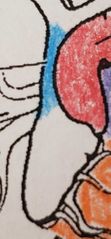
|
|
|
Brachial artery |

|
|
|
Inferior vena cava |
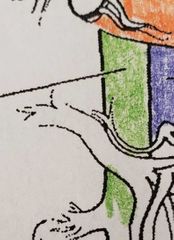
|
|
|
Aorta |
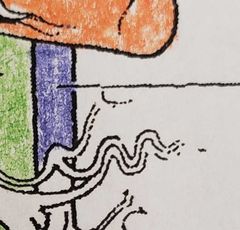
|
|
|
Heart |
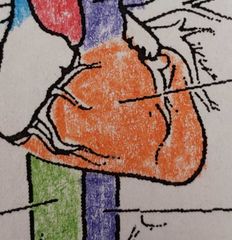
|
|
|
Pulmonary trunk |
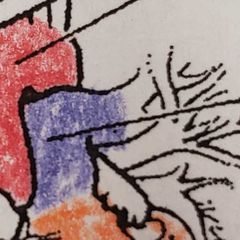
|
|
|
Aortic arch |
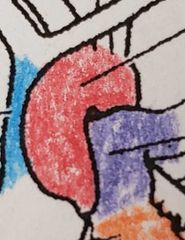
|
|
|
What is pulmonary circulation? |
Circulation that goes to the lungs |
|
|
What are pulmonary arteries? |
Deoxygenated blood leaves the right ventricle of the heart and travels through this artery to the lungs where the blood becomes oxygenated |
|
|
Where does oxygenated blood go after going to the lungs? |
Blood returns from the lungs to the left atrium of the heart by the pulmonary veins |
|
|
What is systematic circulation? |
Blood travels from the left ventricle of the heart and goes to the other regions of the body |
|
|
What are arteries? |
They are vascular tubes that take blood away from the heart, carry deoxygenated blood |
|
|
What are veins? |
Vessels that return blood to the heart, carry oxygenated blood |
|
|
How does the blood circulate through the body? |
Blood is pumped out through the aorta and is oxygenated, moves out to the arms, legs, and head and becomes deoxygenated when it goes through the capillaries. Then it is transferred up the inferior vena cava or down the superior vena cava and enters the right atrium where it is then pumped out through the right ventricle and then goes through the pulmonary artery into the lungs. Blood becomes oxygenated again and is pumped into the left atrium where it is then pumped into the left ventricle. Cycle repeats |

